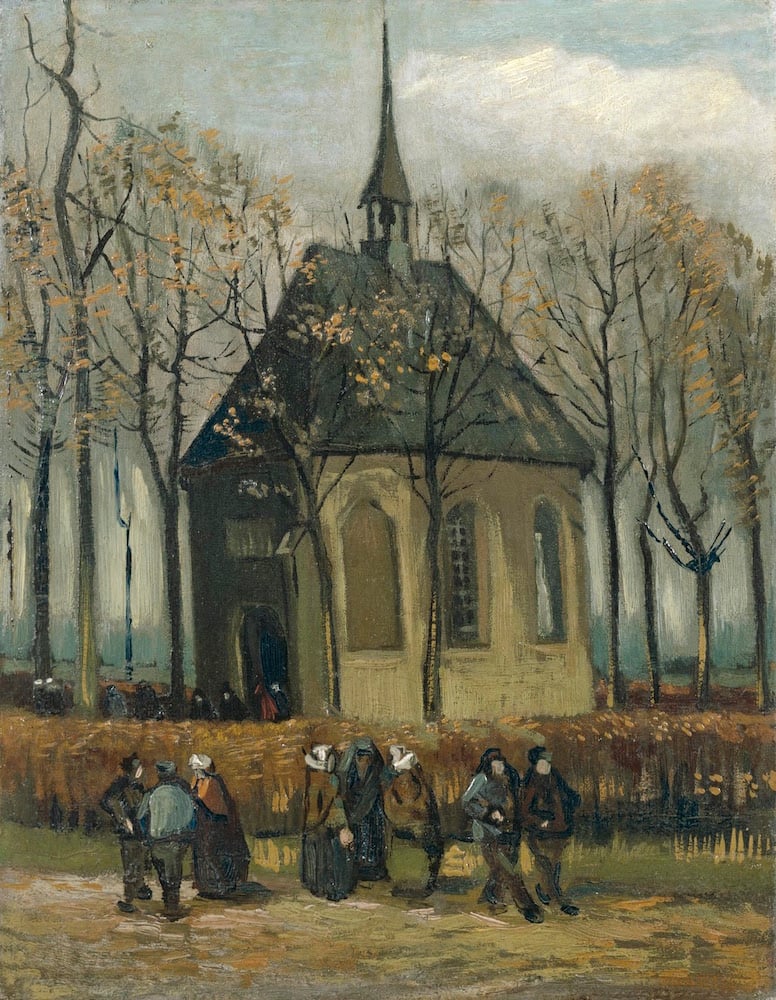
Two infamous Vincent van Gogh paintings have been found in Naples this week, on September 25, 2016, returned in “moderately good condition” reports the Neapolitan edition of Corriere della Sera.
The paintings were on the FBI “Top Ten” unsolved crime list, which has just become a bit shorter.
The investigation was led by Italy’s Corpo della Guardia di Finanza, the Naples Direzione distrettuale antimafia, who have worked tirelessly alongside Dutch investigators to solve the crime.
Congregation Leaving the Reformed Church in Nuenen (1884–85), which is owned by the Dutch Ministry of Education, Culture and Science, and View of the Sea at Schveningen (1882), which is the property of the Van Gogh Museum, were both stolen from the Van Gogh Museum in Amsterdam in 2002.
Vincent Van Gogh, View of the Sea at Schveningen (1882). Courtesy the Van Gogh Museum
The latter, a small picture, is considered to be one of Van Gogh’s finest masterworks, painted while on a visit to the beach in Scheveningen, where the artist famously set up his easel “en plein air” (in the open air). The thick textured brushstrokes, a signature of Van Gogh, still contain the tiny grains of sand that blew onto the canvas that day.
ARCA has spoken directly with the investigators, and when asked about whether they could see the grains of sand, an investigator happily responded, “I have seen them today. And I have smelt the sea.”
Congregation Leaving the Reformed Church in Nuenen has in fact been stolen on two occasions before, the first time in 1991, when a total of 20 Van Gogh works were taken from the same museum. It was only for a short time, however, as all 20 were recovered within 24 hours in Amsterdam, the perpetrators including one museum guard and an ex-employee of the museum’s security firm.
The theft in 2002 occurred between 7 a.m. and 8 a.m. as the museum was closed. It took two thieves less than 30 minutes to get inside of the museum, through a smashed window that immediately triggered an alarm, rush in and rip one painting off the wall each.
They left behind a cloth, presumably one used to break open the window, and the ladder and a rope which were used to scale the wall to enter, as well as to exit when they were ready.
Although the investigation is still undergoing, authorities have arrested and convicted two suspects: Octave Durham who is known as the “the Monkey”, who was arrested in Spain, and Henk Bieslijn, who was caught in Amsterdam.
In March 2010, Giovanni Nistri, of the Comando Carabinieri Tutela Patrimonio Culturale said in a statement that he believed the pair acted on behalf of the Camorra, that there were “important clues to allow the presumption that members of the Neapolitan Camorra were somehow involved in the theft and consequent possession of the two paintings.” Durham has received a prison sentence of four and a half years and Bieslijn four years, both were also charged a fine of €350,000 in damages to the Van Gogh Museum.
The suspects were at first identified by the museum’s security cameras, and have been tracked by the investigators for over a year, both in Spain and the Netherlands. Their phones were also wire-tapped, all of which was used as evidence in court at the time of prosecution.
The motive is being described as financial gain, as the paintings were thereafter sold for a large sum of money. To whom, authorities do not yet know. As the investigation is yet underway, more information will be released as it is confirmed.